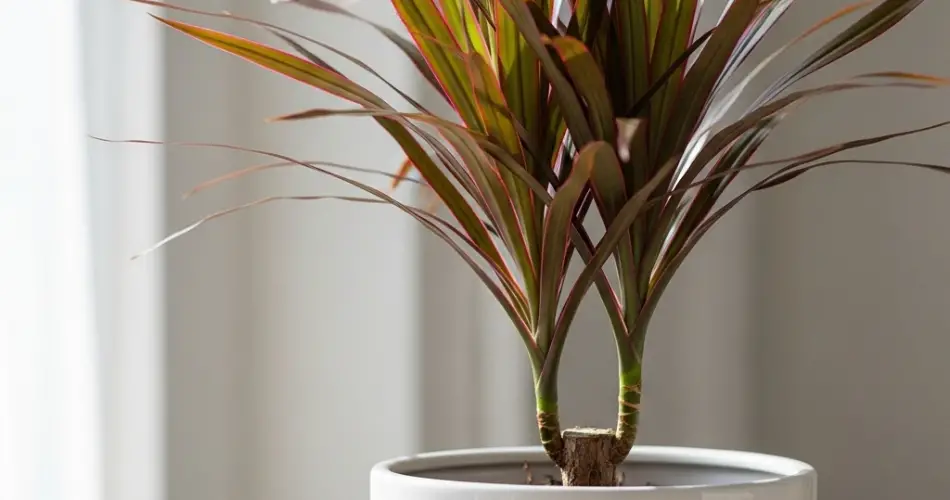Dracaena is one of the most popular houseplants for good reason—it’s low-maintenance, stylish, and tolerant of a range of indoor conditions. Whether you’re growing a compact Dracaena marginata or a tall Dracaena fragrans, proper potting plays a key role in the plant’s health and longevity. The right container, soil, and location can make all the difference between a vibrant, thriving plant and one that struggles to survive.
This guide will walk you through how to pot your Dracaena properly, focusing on drainage, soil selection, and the ideal indoor placement to help your plant flourish.
Why Pot Selection and Drainage Are Crucial
Dracaena is sensitive to overwatering and poor drainage. When its roots sit in soggy soil, they begin to rot—a common cause of plant decline. To prevent this, choose a pot that has at least one drainage hole at the bottom. This allows excess water to escape rather than pool around the roots.
When selecting a pot:
-
Plastic pots are lightweight and retain moisture longer, which is helpful in drier environments.
-
Terracotta or clay pots are porous and allow moisture to evaporate more quickly, ideal for those who tend to overwater.
-
Ceramic pots often come without holes, so use them only as outer decorative covers or ensure they have built-in drainage.
Choose a pot that’s just one or two inches wider than the plant’s root ball. A pot that’s too large will retain too much water in the excess soil, increasing the risk of root rot.
Place a saucer or tray underneath the pot to catch water runoff—but be sure to empty it shortly after watering to avoid water buildup.
Best Soil Mix for Dracaena
Dracaena prefers a light, well-aerated potting mix that drains easily. A compact or moisture-retentive soil can lead to soggy conditions and root rot. Regular indoor potting mix is a decent starting point, but it often benefits from the addition of materials that improve drainage.
A good DIY Dracaena mix includes:
-
2 parts all-purpose potting soil
-
1 part perlite or pumice (for aeration and drainage)
-
1 part coconut coir or peat moss (for balanced moisture retention)
This combination ensures that water flows through easily, while still holding enough moisture for the plant to absorb as needed. Avoid using garden soil or heavy composts in containers, as they tend to compact and retain water.
You can also add a thin layer of pebbles or coarse sand to the bottom of the pot for extra drainage support, although this is optional if your pot already has adequate holes.
When and How to Repot
Dracaena generally needs to be repotted every 2–3 years, or when you notice that the roots are outgrowing the pot. Signs that it’s time to repot include:
-
Roots growing out of the drainage holes
-
Water running straight through the pot
-
Slower growth or yellowing leaves
To repot:
-
Choose a new container about one size larger than the current one.
-
Gently remove the plant and loosen the root ball.
-
Trim any damaged or rotting roots with sterilized scissors.
-
Add a layer of fresh potting mix at the bottom of the new pot.
-
Place the plant in the center and fill around the sides with the prepared soil mix.
-
Water thoroughly and let it drain well.
After repotting, keep the plant out of direct sunlight for a few days to minimize stress.
Ideal Placement Indoors
Dracaena does best in bright, indirect light. Too much direct sun can scorch its leaves, while low light may slow its growth and cause legginess. East- or west-facing windows with filtered light are perfect. If you only have north-facing windows, supplemental grow lights may help maintain healthy foliage.
Avoid placing your Dracaena:
-
Near air conditioning or heating vents (these cause temperature fluctuations and dry out the plant)
-
In dark corners with very little natural light
-
In high-traffic areas where leaves may get bumped or damaged
Dracaena also dislikes cold drafts, so keep it away from frequently opened doors or chilly windows in winter.
Additional Potting Tips
-
Water only when needed: Let the top 1–2 inches of soil dry out before watering again.
-
Flush the soil occasionally: Every few months, water deeply to rinse out salts from tap water or fertilizers that can accumulate in the soil.
-
Watch for pests: Mealybugs and spider mites may appear if the plant is stressed. Wipe leaves regularly and inspect the undersides.
Conclusion
Dracaena is a stylish, forgiving houseplant that can thrive with the right potting practices. Focus on proper drainage, a breathable soil mix, and suitable placement to give your plant the best chance to grow tall and healthy. With these steps in mind, you can enjoy your Dracaena as a beautiful part of your indoor greenery for years to come.



